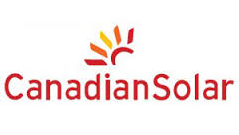

Finn's Canadian Solar Inc Panels Review & Verdict
Finn Peacock has been a Chartered Electrical Engineer since 1998, and is ex-CSIRO
Canadian Solar is one of the largest solar panel manufacturers in the world. While none are now made in Canada, some are produced in the United States. But the ones that end up on our roofs come from China. They're reliable panels that do exactly what they say on the tin. They are well supported and warranted in Australia and I'd be happy to have them on my roof.
There's not much more to say. A sensible choice that should sit on your roof for decades churning out the kilowatt-hours and paying for themselves quicker than a more expensive brand. Very often, the boring but sensible choice is the right choice.
Canadian Solar Inc Panels: Pros & Cons
- A long track record of reliability
- High efficiency of up to 23.4%
- Warranty allows partial, non-permanent shading
- Some panels have better than normal hail resistance and can withstand 35mm or 45mm hail
- Latest panels have 30 year performance warranties with low permitted rates of deterioration
- When installed residentially, their TOPHiKu6 panels have a long 25 year product warranty
- They're not Canadian at all.
- Few models are offered in an install-friendly width, most are 1130mm or 1300mm wide, making them difficult to handle and easy to damage.
About Canadian Solar Inc
While Canadian Solar started in Canada and has its headquarters there, all the panels they sell here are made in China. This isn’t a problem. China produces some quality products, and Canadian Solar panels are among them.
Their panels are supported by an Australian office in Melbourne. Because they are reliable and have a good track record under Australian conditions, we have no problem recommending them.
Canadian Solar Production
In the middle of 2024, Canadian Solar claimed their total panel production was over 133GW. In 2023, they shipped 31GW of solar panels – around the total capacity of functioning panels in Australia that year. This massive amount was definitely enough to make them one of the world's largest solar manufacturers.
In addition to solar panels, Canadian Solar also produces solar silicon and solar cells, making them a vertically integrated company. Most production occurs in China, with none currently in Canada. But in October 2024, they opened a 5GW solar panel assembly plant in Texas and intend to open a similar-sized facility in Indiana. But panels arriving in Australia will be Chinese-made.
Company History
In 1987, the founder of Canadian Solar, Shawn Qu, was earning around $7 a week in today's money teaching in China. This is terrible by our standards. It's also terrible by modern Chinese standards, as average pay there is now around $160 a week. But at the time, it was still better than what about a billion of his compatriots were getting.
That year, he moved to Canada and studied to obtain a master’s degree in physics. In 2001, he founded Canadian Solar and, in 2002, began production in China. It wasn’t until 2011 that they began producing panels in Canada, but they gave up on that years ago, as it wasn't competitive.
Shawn Qu is still CEO of the company. While a Canadian citizen, he spends most of his time in China. I totally understand this because Canada is so cold it’s possible to freeze to death in less time than it takes for a bear to find and eat you.
Like most panel manufacturers, Canadian Solar has had its ups and downs. One major setback was in June 2016 when a cell manufacturing plant they owned in Funing was hit by the worst tornado in China in 50 years, killing two, injuring others, and collapsing almost 4 hectares of factory buildings.
Financial Stability
While there’s no guarantee Canadian Solar won’t run into financial difficulties in the future and go bust, leaving customers without warranty support, at the moment they appear to be in a better financial position than most panel manufacturers. In 2020 they were one of the most bankable solar companies on a list composed by BloombergNEF. If a company is "bankable" it basically means they’re considered unlikely to go belly up any time soon.
Canadian Solar Panels
The Canadian Solar panel series aimed at the home market is the TOPHiKu6. The "TOP" at the start of its name refers to "TOPCon" which is a type of solar cell technology. When installed on residential roofs in Australia, these panels have a 25-year product warranty. They also all have 30-year performance warranties. There are three main sorts:
- TOPBiHiKu6 – a bifacial panel
- TOPHiKu6 – a dual glass monofacial panel
- TOPHiKu6 (All Black) – an all-black dual glass monofacial panel
Because these are Canadian Solar’s most up-to-date panels and the ones most likely to go on Australian roofs, I’ll give their details below.
To see the technical details of these panels and compare them to others we recommend, check out our Solar Panel Comparison Table.
Dual Glass Panels
All TOPHiKu6 panels are dual glass. Instead of having a plastic backsheet and a sheet of glass on top, the solar cells are placed between two layers of glass. The TOPBiHiKu6 is bifacial, which means it can use light hitting it from the front and the rear. The other TOPHiKu6 panels are monofacia - while they have glass on both sides, they can only use light that hits the front.
In a typical rooftop solar installation, panels are mounted only a few centimetres above the roof surface. This means very little light can get in from the sides to hit the rear of the panel, so using bifacial panes provides little or no benefit. But it doesn’t hurt to use them.
The all black panel has nothing to do with rugby. It's called that because it has a black frame and surface. Some prefer the appearance of all black panels.
Dimensions
All TOPHiKu6 panels are 1.13m wide with lengths that vary from 1.72m to 1.96m. The shorter ones are easier to lift onto roofs and, depending on the roof, may allow more panels and a greater total capacity to fit. But provided they fit and are well installed, the longer panels are suitable for rooftop installation.
High Efficiency
Solar panel efficiency is the percentage of sunlight energy they convert into electrical energy. In 2024, I'm happy to call any panel with an efficiency of 22% or more "high efficiency." The TOPHiKu6 bifacial panels can be up to 22.8% efficient, so most of them fall into this category. The monofacial ones can be up to 23.4% efficient, but the all black ones can only manage 23%.
Average Heat Tolerance
Solar panels lose efficiency as they get hotter. The average modern panel has its output reduced by around 0.29% for every degree over 25°C. Canadian Solar’s TOPHiKu6 panels lose exactly this amount. This isn’t bad, but it isn’t exceptional these days.
Temporary Shading Is Tolerated
The Canadian Solar installation manual states their panels cannot be located in permanent shade and specifically states that if a panel suffers a defect due to permanent shade, its warranty will be void. Temporary shading is acceptable. This is important because it’s common for rooftop solar panels to be shaded early and/or late in the day.
Hail Resistance
The hail-resistance of Canadian Solar panels depends on the specific panel type. Panels are rated to withstand multiple impacts by hail travelling at 23m/s while suffering less than a 5% reduction in output. The width of the hail they can withstand varies:
- TOPHiKu6 CS6R and CS6.2 can withstand 45mm hail, which is wider than a golf ball.
- TOPHiKu All Black panels can withstand 35mm hail, which is wider than a 50c coin.
- TOPHiKu CS6.1 can withstand 25mm hail, which is the width of a $1 coin.
If hail resistance is important to you, check what they’re rated for on their datasheet. As most panels are only rated for 25mm hail, this makes some Canadian Solar panels much more resistant than average.
Seaside Installation May Be OK
Canadian Solar panels are certified as corrosion-resistant, but for locations near the sea, they recommend anti-corrosion measures be taken during installation and recommend contacting them for more information if required.
15° Tilt Recommended
So rain can effectively wash them clean, Canadian Solar recommends panels be installed at a tilt of at least 15°. Usually, panels with at least 10° tilt will be adequately cleaned by rain alone. But with a tilt less than this they may need regular cleaning.
Performance Warranty
Performance warranties promise panel output won’t deteriorate over time by more than a set amount. The TOPHiKu6 panels all have 30-year performance warranties. They allow for up to 1% decline in their first year and then a 0.4% decline from their original rating in each subsequent year. While there are other modern panels with similar performance warranties, this is still very good.
Product Warranty
The product warranty covers defects in panel materials and manufacture. If a panel stops working for no external reason, it should be covered by its product warranty. When installed residentially, TOPHiKu6 panels have 25-year product warranties.
Warranty Procedure
If you have a problem with your panels, you should first contact your installer. But if they’re no longer around you can make a warranty claim directly from Canadian Solar. Their customer service number in Australia is 03 8609 1844. Affected customers should contact this line for assistance and advice on how to arrange for panel replacement under warranty.
We Recommend Canadian Solar Panels
In the SolarQuotes 2024 Installers Choice Awards, Canadian Solar panels took third place for Best Value Solar Panels. In the 2022 Installer’s Choice Awards, they also took third place in the same category in a tie with QCELLS. This indicates that installers like them. Canadian Solar produces reliable solar panels and – provided you get the right ones – have long product and performance warranties when installed residentially. As they’re well supported in Australia, we have no problem recommending them.
If you have Canadian Solar panels and would like to let people know what you think of them, please feel free to leave a review. The information will be appreciated.
Canadian Solar Inc has 1 solar panel in our database
Filter by:
Canadian Solar Inc Reviews (2232)
Show Most Relevant reviews from All time
- 5 star 1793
- 4 star 403
- 3 star 24
- 2 star 4
- 1 star 8
View Timeline
13 July 2023
18 May 2021
09 September 2020
04 December 2017
01 November 2025
20 July 2025
03 December 2024
15 July 2024
29 May 2024
22 March 2024
10 February 2024
26 January 2024
17 January 2024
An incentive was offered by Go Green Energy for this review. Learn more here.
The only time I contacted Go Green was to get his recommendation for a solar panel cleaner.
19 November 2023
In the middle of the day, neither set of panels is generating full power, but because the total array power exceeds the (6kW) inverter capacity, the inverter is running at full power for a major part of the day, which would not happen if the panels were all concentrated on one side of the roof.
04 August 2023
However, it has only been 3 weeks since my system was installed. Time will tell.
15 March 2023
Since I've had solar, My bill comes monthly. First couple bills had small amount to pay but after about 3rd month haven'tplayed cent, have been in credit for approximately $230 each time.
Happy even times when weather wet for most month no bill and have been using air-conditioning more
14 February 2023
13 October 2022
08 September 2022
22 August 2022
10 August 2022
10 June 2022
04 June 2022
24 February 2022
18 February 2022
30 December 2021
10 December 2021
For 12 months they have been very efficiently using the sun to our advantage. on clear days we always hit 5kw and on cloudy days, they still catch a certain amount of energy. Very happy.
11 November 2021
03 November 2021
They have also held up against a number of storms with relatively small hail recently, not sustaining any damage.
17 October 2021
26 July 2021
23 July 2021
Now mid winter, the 18 panels generate a peak of 4.9 to 5kW of energy. On a sunny day, the panels will fully charge our PowerWall battery by midday.
10 June 2021
02 June 2021
31 May 2021
Happy to continue with them for a Long term.
12 May 2021
Update: I am disappointed in the performance of these panels as they are not generating the amount of electricity I thought they would. I'm not sure if there is a problem with them or if it's just because of inclement weather but I am still getting electricity bills that are not that much improved on what I used to get pre-installation of this system.
22 March 2021
09 March 2021
23 February 2021
Over summer I ended up producing up to 40Kw daily, so exporting up to 30 Kw at times so very happy. Over the last Qtr I got a $65 Credit from Red Energy with a FiT of 11c pkw.
17 February 2021
1 Year on and still very happy with the panels... They stay very clean and appear like new after rain. System is producing super results and so pleased that had Green Wiring install another system at our business premises.
25 January 2021
18 October 2020
03 October 2020
23 August 2020
23 August 2020
11 August 2020
27 June 2020
19 June 2020
























































































































































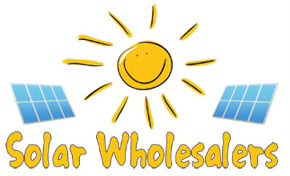




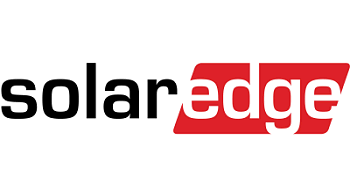

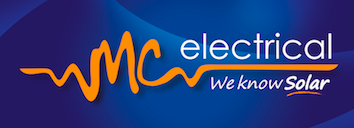
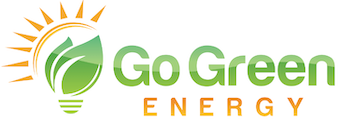


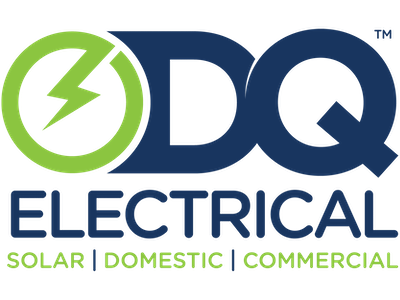


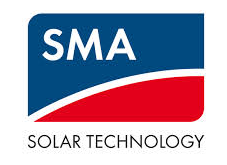
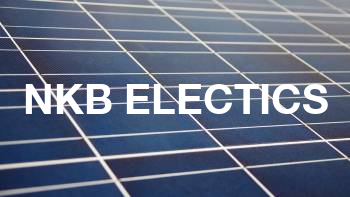
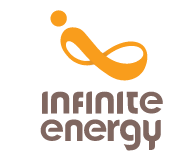












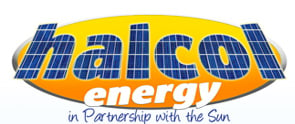

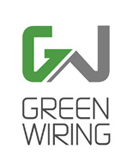




The system is producing around 13,000 kW per year, down from 14,000 kW per year initially.
Very happy with this system. It paid for itself in approx 3 years.
We had not received a power bill until just recently, following the recent increases in power prices, and we are now planning to add batteries.